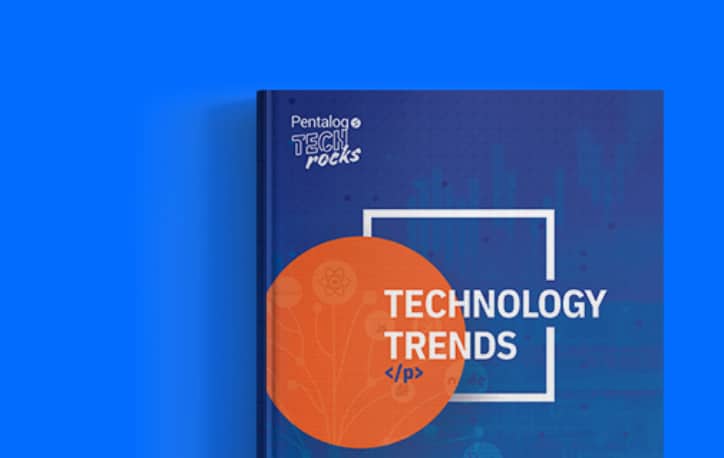Last Updated on April 11, 2025
Everyone says data is power. But let’s be honest: in most companies, data is politics.
It’s locked in tools no one understands, hoarded by teams that speak in SQL riddles, and scattered across spreadsheets with version names like final_FINAL1_revised. Meanwhile, the marketing team is begging for customer insights, sales is making gut decisions, and ops is stuck in limbo waiting for answers.
According to CData’s State of Connectivity Report, 68% of IT workers feel overwhelmed by the number of technical resources required just to access the data they need to work, and 49% of ops leaders can’t access the data they need to do their jobs. What’s worse is that over a third (35%) of leaders admit to ignoring data altogether when the information they need is inaccessible. And it’s not just leaders. 68% of IT and ops leaders believe their teams (and other employees) regularly skip using data in decision-making because it’s just too hard to access.
That’s what data democratization is supposed to fix. Open up the gates. Let everyone in. Empower teams with access.
But here’s the part no one talks about – if your data is a mess (which raw data often is), democratization just spreads the mess faster.
Therefore, before you break down silos, clean up what’s behind them. Clean and matched data is what makes democratization actually work. Otherwise, it doesn’t enable better decisions, it just speeds up bad ones.
What is Data Democratization?
Think of data democratization like removing the velvet rope around your company’s most valuable insights. It’s the process of making data assets available to everyone – not just data scientists, analysts, engineers, or the folks who know how to write SQL queries. When done right, it gives every team member, regardless of their technical background, the ability to access, explore, and use data to inform their decisions.
Wondering why is data democratization such a big deal right now?
Because businesses are drowning in data but starving for insight. Teams are under increasing pressure to move faster, be more autonomous, and back their decisions with evidence. And yet, as research (mentioned above) shows, many employees still can’t access the data they need.
This gap between data availability and usability is exactly what data democratization aims to close.
It’s a response to the rising complexity of modern business, where a single customer journey might touch ten different systems, and one campaign could rely on inputs from marketing, sales, product, and support. Teams need access to data. And they need it now. Data democratization makes that possible, and that is why it’s gaining momentum.
But one critical point to remember here is that democratizing data isn’t just about giving more people access to your data warehouse. It’s about giving them usable access.
That’s where most organizations trip up. They are so focused on tearing down the gates that they forget to clean the house first.
It’s important to realize that access to bad data isn’t empowering. In fact, it is misleading. Democratization works only when the data stack being shared is accurate, consistent, and trusted. Otherwise, it just spreads confusion and chaos.
Why Democratize Your Data? The Benefits of Data Democratization
Given that effective data democratization can be a challenging task, some may question if it’s worth the hassle. The answer is – when executed properly, data democratization can fundamentally transform an organization. It makes data accessible to all the right people, which then can lead to tangible businesses benefits. These include:
1. Faster, More Informed Decision-Making
One of the core benefits of data democratization is its ability to speed up decision-making. When all teams can access the data they need, they are empowered to make decisions without having to wait for IT or data analytics experts. This not only accelerates business operations but also ensures that decisions are data-driven rather than based on gut feeling or incomplete information.
2. Improved Collaboration and Cross-Functional Innovation
Democratization of data promotes a culture of collaboration. When different teams across the organization work with the same data, they can share insights and collaborate more effectively. This cross-functional collaboration often leads to innovative solutions and breakthroughs, as diverse perspectives can leverage shared data to solve complex problems.
For example, sales, product, and customer support teams can collectively work on understanding customer feedback, churn rates, and buying patterns for product improvements, better customer service, and more accurate sales strategies.
3. Increased Efficiency and Reduced Dependency on IT Teams
When data is siloed, teams often have to go through IT or data specialists to access the information they need, which causes delays. According to the State of Connectivity report, 41% of IT professionals say they spend up to 60% of their time handling data access requests, yet they fail to deliver data fast enough.
Data democratization eliminates this bottleneck. It allows teams to work independently and efficiently, and let IT departments focus on higher-value tasks like developing new tools or improving infrastructure rather than constantly fielding requests for data access.
4. Empowered, Productive Employees and Data-Driven Culture
A major benefit of data democratization is the shift it drives toward a data-driven culture. It helps employees at all levels of the organization feel more connected to the company’s data, which empowers them to use it in their daily tasks and decision-making processes. This results in a workforce that is more aligned with company goals and strategies, and ultimately, one that is more productive and engaged.
In an organization that has embraced data democratization, every team member, from entry-level to executive, can look at performance metrics and use that data to drive improvements in their respective areas. This fosters a greater sense of ownership and purpose.
5. Better Customer Experience
When all customer-facing teams have access to accurate data, they can better serve their customers. Whether it’s a sales representative having insights into a customer’s purchase history or a support agent knowing the details of a customer’s previous issues, data accessibility enables more personalized services, which then improves overall customer satisfaction and loyalty.
The Challenges in Data Democratization
Empowering everyone on your team to make data-driven decisions sounds great. But making it happen? That’s where things get complicated. Here are the roadblocks that often stand in the way:
1. Data Silos: The Hidden Barrier to Access
Data silos are one of the biggest culprits in preventing successful data democratization. These silos – often existing across departments, technologies, or tools – lead to fragmented data that is difficult to access, understand, and use. Marketing might have insights buried in their CRM, while sales relies on an entirely different system to track customer interactions.
Without the proper infrastructure to integrate these data sources, making data universally accessible becomes an uphill battle. Even when the data exists, if it’s locked away in different isolated systems, it’s effectively useless to anyone outside the siloed teams.
2. Data Quality Issues: Garbage In, Garbage Out
Imagine trying to make strategic decisions based on data that’s inaccurate, inconsistent, or incomplete. That’s the reality many organizations face when they attempt to democratize data without addressing data integrity or quality issues. When data is not trustworthy, democratizing it only spreads confusion and undermines the decision-making process.
Clean, accurate, and consistent data is essential for democratization to actually work. If your data isn’t reliable, it’s simply setting teams up for failure.
3. Lack of Data Literacy: It’s Not Just About Access
Providing access to data is just one part of the equation. The other part is ensuring that your employees are data literate, i.e., have the skills and knowledge to interpret and use that data effectively. A lack of data literacy can be a major stumbling block for any organization. If teams don’t know how to perform data analysis, democratization doesn’t lead to smarter decisions. Instead, it causes confusion and frustration.
Providing training and the right tools is just as crucial as making the data accessible in the first place. Without proper data literacy programs, employees are left to guess what the data means or, worse, misuse it altogether.
4. Compliance and Privacy Concerns: Data Access Without the Risks
Another critical challenge in establishing data democracy is ensuring compliance to data security and privacy laws, especially in strictly-regulated industries like healthcare and finance. Making data accessible to more people within the organization can inadvertently open the door to privacy breaches or legal violations.
GDPR, CCPA, and other privacy laws impose strict guidelines on how data should be handled, and failing to follow these can result in severe penalties.
To avoid compliance issues, companies need to ensure that they can provide easy access to data while still safeguarding sensitive information and adhering to regulatory requirements.
The Role of Clean and Matched Data in Data Democratization
Before you open up your data to the entire organization, you need to make sure it’s usable. That means doing two things first: cleaning and matching.
Why Clean, Matched Data Matters for Democratization?
Your data needs to be trustworthy, especially when you’re making it accessible to more people. Without data preparation, democratization can quickly become a game of telephone – where everyone’s working with their own version of the truth and ends up drawing different conclusions from fragmented, duplicated, or inaccurate records.
Clean and matched data ensures:
- Everyone is working from a single source of truth. No confusion, no contradictions.
- Insights are reliable. This allows teams to explore and analyze data with confidence, without wasting time questioning the validity of what they see.
- Collaboration becomes easier. Marketing, sales, ops, and finance all see the same picture, which makes it easier for them to collaborate and leads to faster, smarter decisions.
- Teams are empowered, not mislead. If bad data flows freely, it only creates more issues.
- Trust in the data. And in the decisions that follow.
Example:
Let’s consider a retail company rolling out a new loyalty campaign. Marketing pulls customer data to target previous buyers, but finds multiple profiles for the same customer. If the company works with this data, it will end up sending duplicate messages to the same person, which skews engagement metrics as well as waste campaign budget.
Now if the same campaign is run with clean, matched data, where every customer is recognized as a single entity, the messaging will be coordinated, results will be accurate, and the team will move quickly to optimize based on reliable data insights. This is why forward-thinking organizations are investing in data preparation tools, like DataMatch Enterprise (DME), to clean, match, and unify their records before democratizing their enterprise data.
Best Practices for Democratizing Data While Also Ensuring Quality
Data democratization sounds great – until messy, fragmented, or sensitive data gets into the wrong hands or fuels the wrong decisions. Giving people access is only part of the job. The real challenge is doing it right.
Here’s how to open up your data without opening up a can of worms:
1. Start with Strong Data Governance
Before you even think about rolling out access, put guardrails in place. Who gets access to what? What counts as a trusted source? How should data be shared and used across departments? Good governance defines the rules of engagement so teams can act fast, without stepping on landmines. It also helps ensure compliance with privacy regulations like GDPR or HIPAA.
Pairing governance with regular data audits helps identify any issues before they escalate.
2. Clean and Match Your Data First
We’ve said it before, but it’s worth reiterating: democratizing data without cleaning and matching just spreads the mess in your data lakes faster. Invest in data processing tools that automatically cleanse, deduplicate, and standardize records across systems. This ensures teams work from a single, consistent source of truth, and there’s no more second-guessing or reconciling conflicting reports.
3. Implement Role-Based Access Controls (RBAC)
While data democratization is all about data sharing, it doesn’t mean giving everyone access to everything. That’s a recipe for overload—and potential security issues. Instead, adopt a role-based access approach. Give each team access to the data they need to do their jobs—not more, not less.
4. Invest in Data Literacy
Even clean data can be misinterpreted if users don’t know how to read or use it. Democratization only works when people understand the data they’re working with.
Offer regular training, encourage a culture of curiosity, and use tools that are intuitive enough for non-technical users to explore with confidence.
5. Create Feedback Loops
Encourage your teams to flag errors, suggest improvements, and report when data isn’t working for them. These feedback loops are key to improving data quality over time and ensuring democratization actually empowers, rather than overwhelms users and systems.
Tools and Technologies That Support Data Democratization
To make data democratization truly effectively, organizations need the right set of tools and technologies that can ensure clean, accessible, and actionable data. These include:
1. Data Integrators or Connectors
A fundamental challenge of data democratization is getting data from disparate sources into one unified view. Many businesses operate in a multi-system environment, where data is spread across various cloud platforms, on-premise databases, and third-party applications. Data integration tools play a key role in connecting these systems and ensuring that data flows seamlessly between them. By consolidating data from multiple sources into a central location, these tools help non-technical users access data easily without worrying about the source.
For organizations that prefer not to centralize their data (for any reason), a data mesh approach can serve as an effective alternative. It allows decentralized ownership while still promoting data accessibility and usability across teams.
2. Data Quality Tools
Data quality tools are the backbone of any successful data democratization initiative as they ensure that the data being shared is consistent, accurate, and trustworthy. They help remove redundancies, standardize formats, and link records across different systems, providing a single, reliable source of truth for all teams.
3. Self-Service Business Intelligence (BI) and Data Visualization Platforms
Once data is integrated and cleaned, the next step is making it accessible in a way that all teams can understand and use. Self-service analytics tools, data virtualization software, and visualization platforms allow business users, regardless of technical expertise, to explore data, generate insights, and make decisions based on facts rather than assumptions. These tools empower teams to create their own reports and dashboards, without needing to rely on IT for every request.
4. Data Catalogs and Metadata Management Tools
As data becomes more democratized, it’s essential to have systems in place to manage metadata and data lineage. Data catalogs help teams find the data they need quickly. This ensures that they are working with the most up-to-date and relevant information. Metadata management tools, on the other hand, keep track of the data’s origin, transformation, and usage, ensuring transparency and governance throughout the process.
5. Role-Based Access and Governance Platforms
As mentioned earlier, while data democratization requires opening up access to data, it doesn’t mean that all data should be available to everyone. Role-based access control and governance platforms help organizations maintain security and compliance while ensuring that the right people have access to the right data. These tools manage permissions, define access roles, and monitor data usage to ensure that sensitive information is protected while allowing teams to leverage the insights they need.
Bringing It All Together: DataMatch Enterprise as a Case in Point – How DME Streamlines Your Data Democratization Strategy
A great example of how these technologies can work together to support data democratization is DataMatch Enterprise (DME). As a powerful data matching and quality management solution, DME ensures that organizations can clean, deduplicate, and match their data across various systems before making it accessible to teams.
With its ability to integrate with various data sources, DME helps organizations centralize their data in a single, trusted location. The platform’s advanced data matching capabilities ensure that all teams are accessing the same high-quality data, which improves collaboration and reduces (if not eliminate) the risk of errors. Furthermore, DME helps organizations maintain compliance with data privacy and security regulations, thereby, ensuring that democratization doesn’t compromise data security. It serves as an excellent example of how a comprehensive data quality solution can streamline data democratization efforts and ensure that teams are working with clean, matched, and trusted data.
Turn Data Access into Business Success with Clean, Matched Data
Data democratization is a powerful strategy for businesses that want to make better, faster decisions and establish a more collaborative, data-driven culture. However, to truly succeed, you must address quality challenges and ensure your data is clean, complete, and reliable.
While you explore ways to democratize data access in your organization, let us help ensure your data is clean and accurate. Download a free demo of DataMatch Enterprise (DME) or contact us for a personalized consult with our data management experts.





































